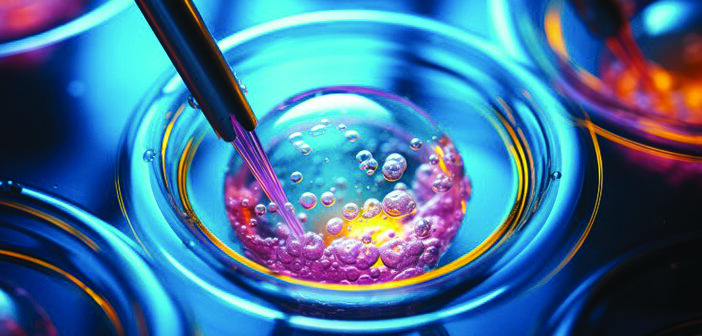Former med school dean discusses the potential implications of creating eggs and sperm from any cell.
It’s only a matter of time before technology will allow scientists to take cells from a person’s mouth or skin and, using a process called in vitro gametogenesis, turn those cells into eggs or sperm. Which means, says Eli Y. Adashi, MD, MS, a professor of medical science, that those sperm can fertilize those eggs to create an
embryo—all in a lab.
In fact, it’s only a matter of time before scientists will be able to use a person’s cheek cell to custom-create any kind of cell, adds the former dean of medicine and biological sciences.
“Using induced pluripotent stem cells, you could make a neural cell that would perhaps help a paralyzed person walk, or a cell that you could implant in the brain of a patient with Parkinson’s disease and, in theory, cure Parkinson’s disease,” Adashi says. “It’s essentially a replacement technology that allows you to make new spare parts when the original parts are not working.”
The possibilities are endless—and so, too, are the ramifications. This, Adashi says, is what motivated the National Academies of Sciences, Engineering, and Medicine to host a three-day workshop last year discussing scientific, ethical, and regulatory implications of in vitro-derived human reproductive cells.
“The National Academy of Medicine recognizes the potential of IVG, and concluded that this was a topic worthy of their attention at this time, while realizing full well that it’s not yet at the stage of application,” says Adashi, a member of the academy who chaired the committee that led the workshop in April.
The resulting report, more than 140 pages long, was published last fall. Adashi says the work on IVG dates back to about 2009 and, in 2013, he visited researchers in Japan who took skin cells from a mouse’s tail, reprogrammed them into induced pluripotent stem cells (iPSCs), and turned those stem cells into egg cells. Now some investigators from around the world have been able to take these iPSCs and create an egg or sperm in a rodent, he says.
“They then use those egg and sperm cells to fertilize the appropriate opposite gamete to give rise to an embryo that is then implanted in foster mothers, who then give birth to pups. Some of those pups were also able to reproduce,” he says.
Adashi stresses that IVG has only been accomplished in rodents and is “nowhere near human application.” Even in the event of such a development, it would require FDA approvals.
IVG shows promise in simplifying IVF, as the process would remove the need for hormonal injections or a surgical procedure to retrieve eggs, Adashi says. While the person would provide a cell from the inside of their cheek or skin, they would still have to undergo the placement of the embryo in the uterus.
“In the normal IVF process, you retrieve 10, maybe 14 eggs. But in IVG, you can create essentially an unlimited number of eggs. There is the potential to create many more human embryos, for research or clinical use, than current assisted reproductive technologies,” Adashi says.
The process can also potentially help people who are born without ovaries or have ovaries that are non-functional. Adashi says that it may even become possible for same-sex couples to be the genetic parents of children.
“The applications of IVG are already taking off in directions that would have been thought of as unworkable as recently as five or 10 years ago,” he says.




